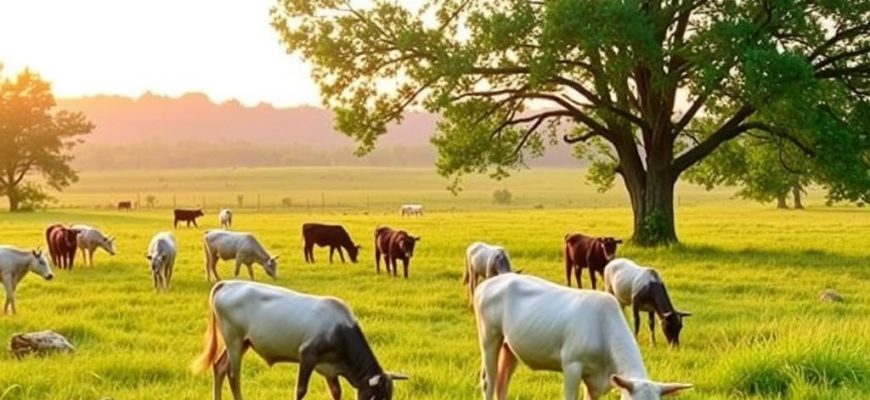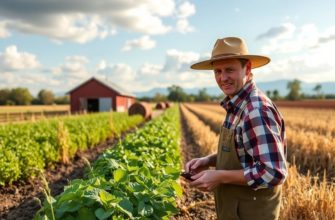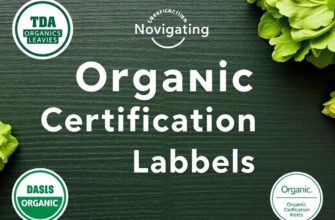Международное название:
Синонимы:
Характеристики:
| Сложность: | |
| Цикл развития: | |
| Световой режим: | |
| Режим полива: | |
| Температура: | |
| Почва: | |
| Ключевая черта: |
Цвет листвы
Цвет бутонов
Размеры цветка
Систематика:
| Домен: | |
| Царство: | |
| Отдел: | |
| Класс: | |
| Порядок: | |
| Семейство: | |
| Род: |
Think of your pasture as a living, breathing community where plants, animals, soil microbes, and water all interact. When managed well, this community produces abundant forage, stores carbon, improves soil structure, and supports healthy livestock. Managed poorly, it becomes patchy, eroded, and costly. This article walks you through effective pasture management and rotational grazing in a straightforward, friendly way. Whether you are a seasoned grazer or a curious newcomer, you’ll find practical ideas, step‑by‑step plans, and useful tools to make your pasture more productive and resilient.
We’ll explore why pastures sometimes fail, how to read the land, and how rotational grazing can transform the way you manage animals and plants. You’ll find clear descriptions, real‑world tips for infrastructure and animal flow, and checklists you can use on the ground. We’ll also include sample grazing plans, species tables, and management calendars to help you design a system that fits your climate, soil, and goals.
- Why Pasture Management Matters
- Basic Principles of Pasture Health
- Soil Is the Foundation
- Plant Diversity Builds Resilience
- Proper Grazing Height Matters
- Rotational Grazing: What It Is and Why It Works
- Core Benefits
- Common Types of Rotational Systems
- Planning Your Rotational Grazing System
- Estimating Carrying Capacity
- Designing Paddocks
- Typical Grazing Schedule Example
- Choosing Forage Species
- Common Forage Options
- Infrastructure Essentials
- Fencing
- Water Access
- Shade and Shelter
- Handling Facilities
- Implementing Rotational Grazing: Step by Step
- Practical Tips for Moves
- Animal Considerations
- Stocking Rate and Animal Health
- Parasite Control
- Monitoring and Record‑Keeping
- Simple Monitoring Checklist
- Managing Pastures by Season
- Seasonal Calendar Example
- Soil Fertility and Nutrient Management
- Manure as a Resource
- Common Mistakes and How to Avoid Them
- Overstocking
- Insufficient Rest
- Ignoring Water Distribution
- Waiting Too Long to Seed or Renovate
- Economics: Costs, Returns, and Decisions
- Cost–Benefit Checklist
- Innovations and Tools
- Useful Tools
- Case Study: Transforming a Degraded Pasture
- Tips for Different Livestock Types
- Cattle
- Sheep and Goats
- Horses
- Environmental and Conservation Benefits
- When Things Go Wrong: Troubleshooting
- Persistent Weeds
- Poor Regrowth
- Uneven Manure Distribution
- Quick Reference Checklists
- Before You Start a Rotation
- Daily/Weekly Management
- Resources and Further Learning
- Final Thoughts
- Conclusion
Why Pasture Management Matters
Pasture is not just “grass.” It’s an ecosystem that provides feed, stores nutrients, protects water, and hosts wildlife. Good pasture management improves animal performance, reduces feed costs, and creates a more resilient farm. The benefits stack up: healthier animals, lower inputs, fewer drought losses, and a stronger bottom line. But to realize those benefits you need to manage plants and animals together with an eye for soil health and long-term productivity.
One key to success is shifting from a mindset of “use the forage” to “manage the plants.” Plants need recovery time between grazings to rebuild root reserves and maintain vigor. Animals are tools in that system, not just diners. When you organize grazing with plant recovery in mind, you get more forage over time, better ground cover, and fewer weeds.
Basic Principles of Pasture Health

Soil Is the Foundation
Start with soil. Soil texture, organic matter, structure, and fertility determine which plants will thrive. Healthy soil holds water, feeds roots, and supports soil life. Test your soil regularly to know pH and nutrient levels. A soil test guides lime and fertilizer choices and helps you match forage species to conditions.
Plant Diversity Builds Resilience
Monocultures can be efficient short term but fragile long term. Mixed pastures—grasses, legumes, and forbs—balance nutrient cycles and extend grazing windows. Legumes fix nitrogen, reducing fertilizer needs; deep-rooted forbs and grasses mine nutrients and enhance drought resilience.
Proper Grazing Height Matters
Leave enough leaf area. That’s the simplest way to help plants recover. Overgrazing depletes root reserves and weakens plants, inviting weeds and erosion. Under-grazing can lead to old, stemmy forage and reduced quality. Aim for an optimal residual height based on your forage species—this protects plant health and sustains production.
Rotational Grazing: What It Is and Why It Works
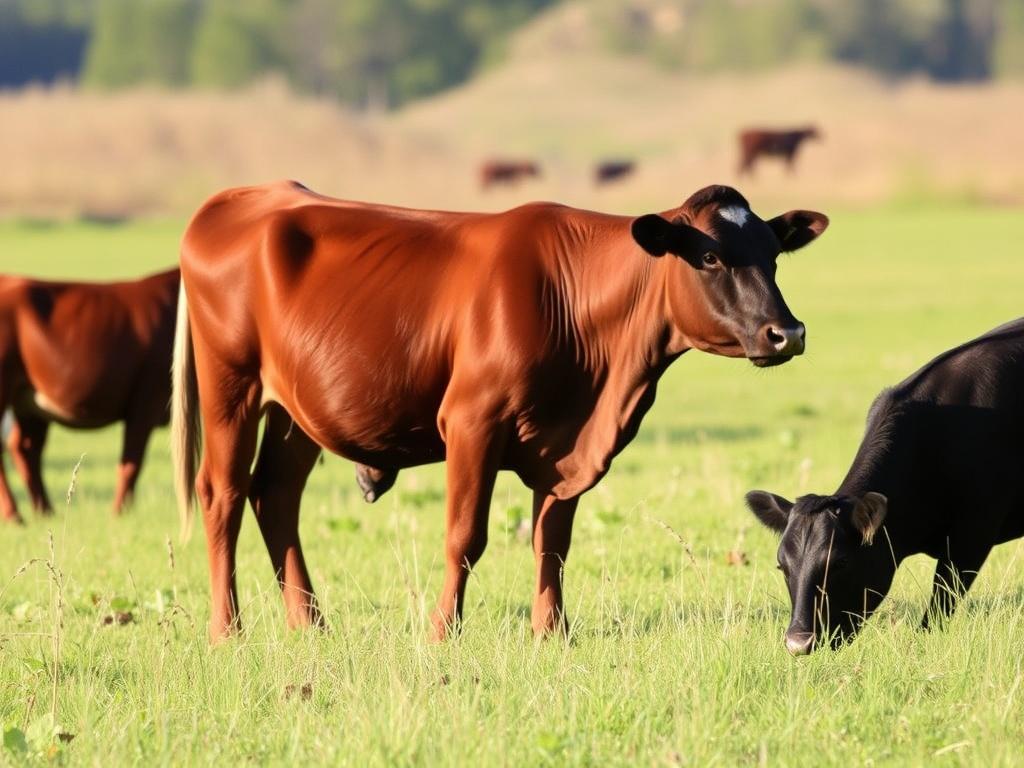
Rotational grazing divides pasture into smaller paddocks and moves animals frequently. Instead of continuous access, animals graze a paddock for a short period (hours to days), then rest the paddock for weeks. This mimics natural grazing patterns of wild herbivores, which grazed intensively then moved on, allowing plants time to recover.
Core Benefits
- Improved forage utilization: Animals graze more efficiently and evenly.
- Increased forage production: Rest periods let plants regrow stronger roots and more leaves.
- Better animal health: Access to fresher, higher-quality feed and reduced parasite loads with strategic moves.
- Enhanced soil health: Increased organic matter and better infiltration reduce runoff and erosion.
Common Types of Rotational Systems
- Simple paddock rotation: Divide field into several paddocks and rotate weekly or bi‑weekly.
- Intensive rotational grazing (mob grazing): High stocking density for short durations (1–3 days) with long rest periods.
- Leader‑follower systems: Younger stock graze first and larger animals follow to clean up residuals.
- Cell grazing: Many small cells grazed intensively in sequence.
Planning Your Rotational Grazing System
Good planning prevents guesswork. Start with the size and shape of your paddocks, water access, fencing layout, and an estimate of how many animals the pasture can support. Think seasonally and build flexibility into your plan so you can adjust to wet springs, dry summers, and unexpected events.
Estimating Carrying Capacity
Carrying capacity tells you how many animals the pasture can support without damage. It depends on forage yield (tons/acre), animal dry matter intake, and grazing efficiency. A simple approach is:
- Estimate annual forage production per acre (ton DM/acre).
- Multiply by a grazing utilization factor (typically 30–50% depending on your system).
- Divide by annual animal dry matter requirement (animal units).
This gets you near a workable stocking rate; then adjust based on observation and weather.
Designing Paddocks
You don’t need dozens of tiny paddocks to get started. Even dividing a field into 4–6 paddocks improves grazing distribution. Key design principles:
- Create paddocks that allow even grazing—long narrow paddocks can improve animal movement from water and shade.
- Locate water centrally or provide water to each paddock to avoid overuse near water points.
- Use electric fencing for flexibility and to refine paddock size as forage grows.
Typical Grazing Schedule Example
| Paddock | Grazing Duration | Rest Period | Notes |
|---|---|---|---|
| 1 | 3 days | 18 days | High palatability forage, first in rotation |
| 2 | 3 days | 18 days | Mixed grasses and legumes |
| 3 | 3 days | 18 days | Lower fertility area, monitor recovery |
| 4 | 3 days | 18 days | Contains shade and water |
This table shows a 4‑paddock, 21‑day rotation where rest period is six times the grazing period. Adjust rest lengths by season—longer in cool seasons, shorter in peak growth—but always keep plant recovery in mind.
Choosing Forage Species
Match species to climate, soil, and livestock needs. Forage selection influences grazing length, nutritional quality, and seasonality. Mixing cool‑season and warm‑season species can smooth forage supply through the year.
Common Forage Options
| Species | Type | Strengths | Best Use |
|---|---|---|---|
| Perennial ryegrass | Cool-season grass | Fast regrowth, high quality | Intensive grazing systems, early spring |
| Orchardgrass | Cool-season grass | Drought tolerant for cool-season grasses | Mixed stands, summer grazing |
| Kentucky bluegrass | Cool-season grass | Persistent sod-former | High traffic areas |
| Tall fescue (endophyte-free) | Cool-season grass | Persistent, productive | General purpose pastures |
| Alfalfa | Legume | High protein, fixes nitrogen | Hay and rotational grazing—careful with young animals |
| Red clover | Legume | Good regrowth under grazing | Mixed pastures for improved quality |
| Teff | Warm-season grass | Fast regrowth, heat tolerant | Summer grazing in warm climates |
| Sudangrass / Sorghum-sudangrass | Warm-season grass | High yield, deep roots | Summer forage with careful nitrate testing |
Note: Some species have animal health considerations (e.g., toxic endophytes in fescue or prussic acid potential in sorghum-sudangrass). Choose varieties and management strategies to mitigate risks.
Infrastructure Essentials
Good infrastructure multiplies the benefits of thoughtful grazing. You don’t need to spend a fortune; start small and invest incrementally.
Fencing
Reliable fences control animal movement and protect sensitive areas. Options include permanent wire fencing for boundaries and temporary electric fencing for flexible paddocks. Electric netting and polywire are inexpensive and easy to move as your rotation evolves.
Water Access
Water location shapes grazing patterns. Ideally, each paddock has its own watering point. If that’s not feasible, provide multiple troughs or moveable tanks so animals don’t overuse areas near a single source. Ensure water supply is adequate year‑round and protected from contamination.
Shade and Shelter
Shade influences where animals concentrate, especially in summer. Natural shade from trees works well, but consider portable shade structures if trees are scarce. Shelters also help in cold and wet weather, reducing stress and energy needs.
Handling Facilities
Design safe, efficient handling facilities for weighing, sorting, and health checks. Moveable crowding alleys and portable head gates integrate well with rotational systems, letting you work animals with minimal stress.
Implementing Rotational Grazing: Step by Step
Here’s a practical roadmap to move from continuous grazing to a managed rotation. Each step includes an action you can take this week or month.
- Assess your land: Walk fields, note soil types, moisture, shade, and problem areas. Map paddocks, water, fences, and slopes.
- Get a soil test: Send samples and use results to correct pH and nutrient imbalances before seeding or heavy use.
- Decide on paddock number and size: Start with 4–8 paddocks per pasture for flexibility; use temporary fences to refine layout.
- Install water or plan for moveable tanks: Place water to promote even grazing.
- Set grazing targets: Determine pre‑ and post‑grazing heights for your forage mix.
- Move animals frequently: Begin with short grazing periods (1–7 days) and rest paddocks until plants reach target regrowth.
- Monitor and adjust: Use a simple notebook or app to record dates, yields, and animal condition. Adjust stocking or rotation length as needed.
- Improve paddocks in the off-season: Reseed, patch bare spots, and build soil organic matter with cover crops or compost if necessary.
Practical Tips for Moves
- Move animals in the cool of the morning or evening to reduce stress.
- Use leader animals or flags to guide movement, and keep handling calm and consistent.
- Rotate watering and mineral placement to encourage even grazing across the paddock.
Animal Considerations
Animal type, class, and behavior influence how you design rotation. Lightweight stock eat less and move more easily, while heavier animals can graze more intensively. Consider nutritional needs: lactating animals require higher quality forage, so plan higher‑quality paddocks for them.
Stocking Rate and Animal Health
Don’t overload your system. Overstocking leads to overgrazing and soil damage. Monitor body condition scores; if animals lose condition, either reduce stocking density, supplement feed, or lengthen rest intervals.
Parasite Control
Rotational grazing can break parasite cycles by moving animals off contaminated paddocks before parasite larvae climb plants. Extended rest periods and alternating species (cattle and sheep, for example) can reduce internal parasite burdens. Still, monitor animals and consult a veterinarian for integrated parasite management.
Monitoring and Record‑Keeping
Good records make decisions easier. Track paddock use, forage heights, weather, weights, and any treatments. Over time you’ll see patterns: which paddocks perform best in drought, where compaction is an issue, and how rotation affects production. Use simple tools—a pocket notebook, spreadsheet, or grazing app—to record observations consistently.
Simple Monitoring Checklist
- Pre‑ and post‑grazing forage height
- Animal body condition and health notes
- Paddock rest days and dates grazed
- Rainfall and irrigation events
- Fertilizer or lime applications
Managing Pastures by Season
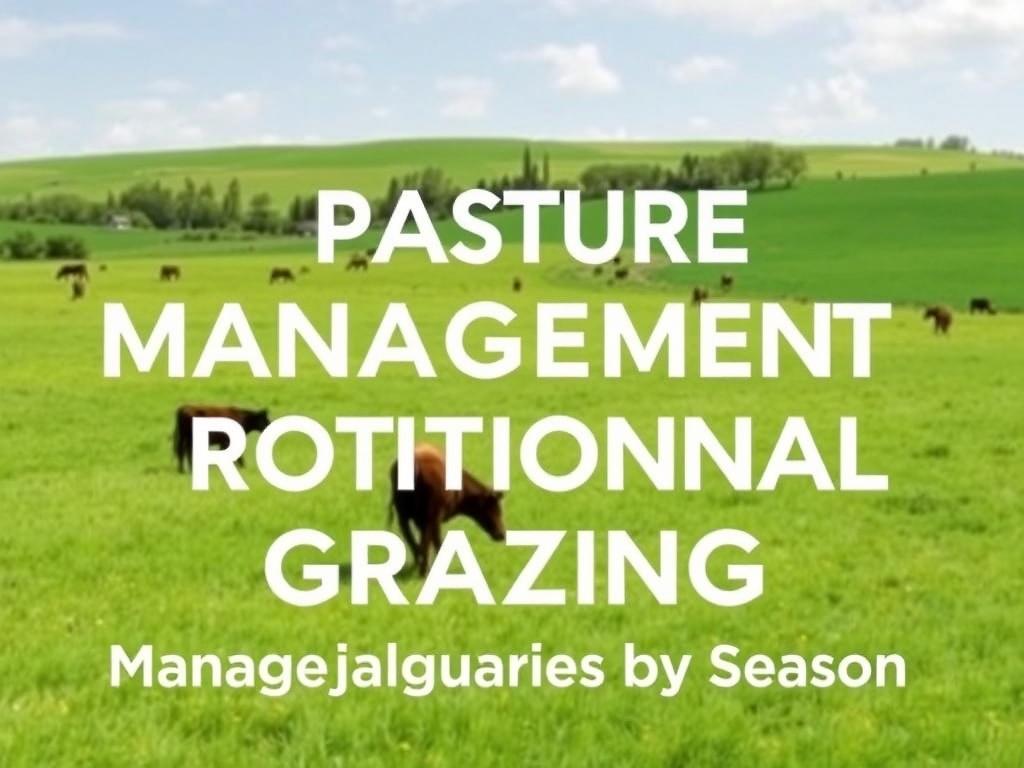
Seasonal management shapes your rotation. Spring is a time of rapid growth; adjust moves more frequently. Summer growth may slow, so lengthen rest periods to preserve plants. Fall is a key recovery period—allow plants to rebuild root reserves for winter. Winter management depends on climate; it might involve stockpiling pasture, providing hay in sacrifice areas, or moving animals to different pastures to prevent damage.
Seasonal Calendar Example
| Season | Primary Focus | Actions |
|---|---|---|
| Spring | Maximize growth | Short rotations, monitor wet areas, adjust stocking |
| Summer | Conserve forage | Lengthen rests, supplement if needed, maintain water |
| Fall | Recovery and stockpile | Allow late regrowth, fertilize if required, plan winter feed |
| Winter | Protect soils and animals | Use sacrifice areas, provide hay, maintain shelters |
Soil Fertility and Nutrient Management
Balanced fertility supports vigorous pasture. Use manure, compost, and legumes to build organic matter. Apply fertilizer based on soil tests rather than guesswork. Consider zoning fertility—apply inputs where production will yield the greatest return, typically on high‑use paddocks.
Manure as a Resource
Managed grazing concentrates manure broadly across paddocks rather than in a single lot, improving soil fertility evenly. Avoid long‑term crowding near water or shade that creates nutrient hotspots and runoff. Where stand density is high, consider spreading collected manure in the off-season.
Common Mistakes and How to Avoid Them
Even experienced managers make predictable errors. Here are common traps and how to sidestep them.
Overstocking
Trying to keep too many animals on limited forage is the fastest route to degraded pastures. Start conservative and increase stock numbers only when monitoring shows the land can sustain them.
Insufficient Rest
Plants need time to recover. If you move animals too quickly back to a paddock, regrowth suffers and productivity drops. Set clear targets for residual heights and rest days and stick to them.
Ignoring Water Distribution
Water points shape grazing. If water is only in one corner, expect heavy use nearby and overgrazing. Plan water points to balance grazing pressure.
Waiting Too Long to Seed or Renovate
Don’t delay improving pastures in the off-season. Address bare spots, reseed thin areas, and manage weeds promptly. Small improvements compound over seasons.
Economics: Costs, Returns, and Decisions
Rotational grazing often requires initial investments—fencing, water systems, and handling facilities—but the returns can be substantial. Reduced hay bills, improved weight gains, and better land health translate into long‑term savings. Run basic enterprise budgets to compare current costs with projected savings from improved grazing efficiency.
Cost–Benefit Checklist
- Costs: fencing materials, water infrastructure, labor, handling equipment.
- Benefits: reduced purchased feed, higher average daily gains, lower vet costs, improved pasture longevity.
- Time horizon: most benefits accumulate over several seasons—plan for multi‑year payback periods.
Innovations and Tools
Technology and new practices make pasture management easier. Drones help map pasture condition; grazing calculators and apps help schedule moves and track rest days. Soil sensors provide real‑time moisture data for irrigation decisions. But remember: technology supplements observation, it doesn’t replace boots on the ground.
Useful Tools
- GPS mapping apps to design paddocks and record fence lines.
- Grazing management apps to schedule moves and monitor forage growth.
- Portable electric fencing for rapid layout changes.
- Simple pasture plate meters to estimate biomass.
Case Study: Transforming a Degraded Pasture
Imagine a small family farm where continuous grazing left only sparse stands and compacted soils near water. The farmer started by soil testing, then divided the 40‑acre field into eight paddocks with portable electric fence. Water was moved with portable tanks so each paddock had access. Stocking rate reduced for one season while legumes were introduced into bare spots.
Within two seasons, ground cover improved, forage yields rose by an estimated 30%, and hay purchases dropped significantly. The farm reported calmer animals at moves, fewer parasite treatments, and improved weaning weights. The investment in fencing and water paid back in reduced feed costs and higher animal performance within three years.
Tips for Different Livestock Types
Cattle
- High stocking density for short times works well; cattle graze faster than smaller ruminants.
- Provide high‑quality paddocks for lactating cows and manage energy needs in late gestation.
- Monitor hoof health in wet conditions and provide dry resting areas if possible.
Sheep and Goats
- Smaller body size allows use of rougher terrain; goats help control brush and woody plants.
- Rotational grazing combined with species alternation can reduce parasite loads.
- Fence small stock carefully—sheep and goats can escape small openings.
Horses
- Horses can create bare patches quickly due to selective grazing and concentrated manure—manage stocking and rotation closely.
- Consider sacrifice paddocks and maintain reliable hay supplies during dry spells.
- Pay attention to laminitis risks when moving horses onto lush spring growth—introduce new pasture gradually.
Environmental and Conservation Benefits
Rotational grazing supports biodiversity, reduces erosion, and improves water quality. With proper rest and cover, pastures store more carbon in soil and sequester greenhouse gases. Riparian buffers and controlled access to streams protect waterways while still providing forage. Pasture‑based systems can be part of a broader conservation strategy that balances production with habitat protection.
When Things Go Wrong: Troubleshooting
Persistent Weeds
Weeds often signal soil fertility issues, compaction, or improper grazing heights. Address underlying causes: correct pH, reseed with competitive forages, and adjust grazing so desirable species outcompete weeds.
Poor Regrowth
Check residual grazing height, soil fertility, and pests. If roots are damaged or plants are weakened, give longer rest periods and consider renovating thin areas.
Uneven Manure Distribution
Move water and mineral placement, and rotate bedding and loafing areas. Manage animal flow so they don’t loaf in the same spots every day.
Quick Reference Checklists
Before You Start a Rotation
- Soil test recent results in hand
- Map paddocks, water, and fences
- Decide on temporary vs permanent fencing
- Estimate stocking rate
- Plan a grazing calendar for the season
Daily/Weekly Management
- Move animals according to plan
- Monitor forage height and animal condition
- Record paddock use and rests
- Check water, fencing, and shade
Resources and Further Learning
Books, extension services, and grazing workshops are invaluable. Local extension agents can tailor advice to your soil and climate, and peer networks can offer practical tips and shared experiences. Attend field days, join a grazing group, and try short experiments on a small scale before changing your whole operation.
Final Thoughts
Effective pasture management and rotational grazing are not a one‑size‑fits‑all recipe. They’re adaptable frameworks that blend observation, planning, and willingness to iterate. Start small, measure results, and let the pasture teach you. Over time, you’ll find a rhythm that produces more forage, healthier animals, and a landscape that sustains both your livelihood and the environment.
Conclusion
Rotational grazing and thoughtful pasture management are practical ways to get more from your land while building soil health, reducing costs, and improving animal welfare. Begin with soil tests and simple paddock layouts, move animals frequently to allow plant recovery, match forage species to your conditions, and keep records so you can adapt. With modest investments in fencing, water, and planning—and by paying attention to the land’s signals—you can transform pastures into productive, resilient ecosystems that support both your farm and the wider environment.
Оценивайте статью, делитесь материалом с друзьями в социальных сетях, а также высказывайте свое мнение в обсуждении ниже! ![]()
